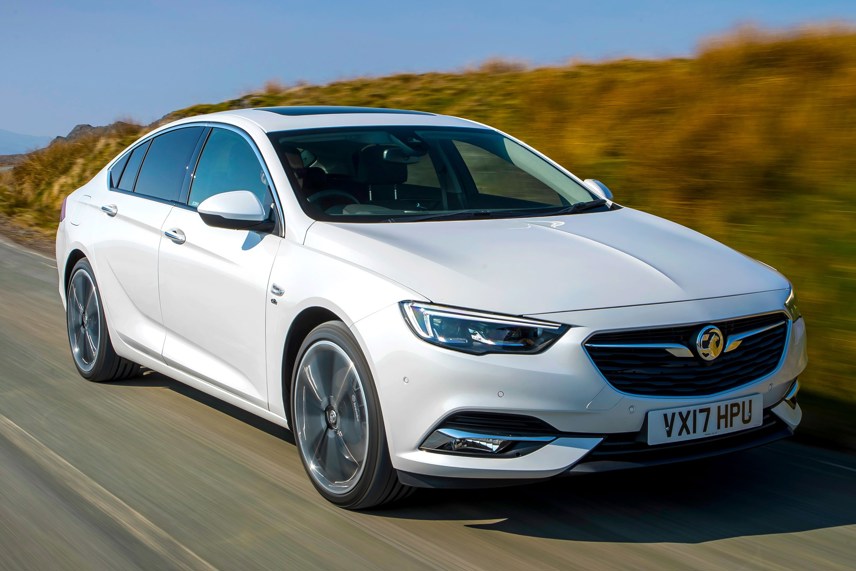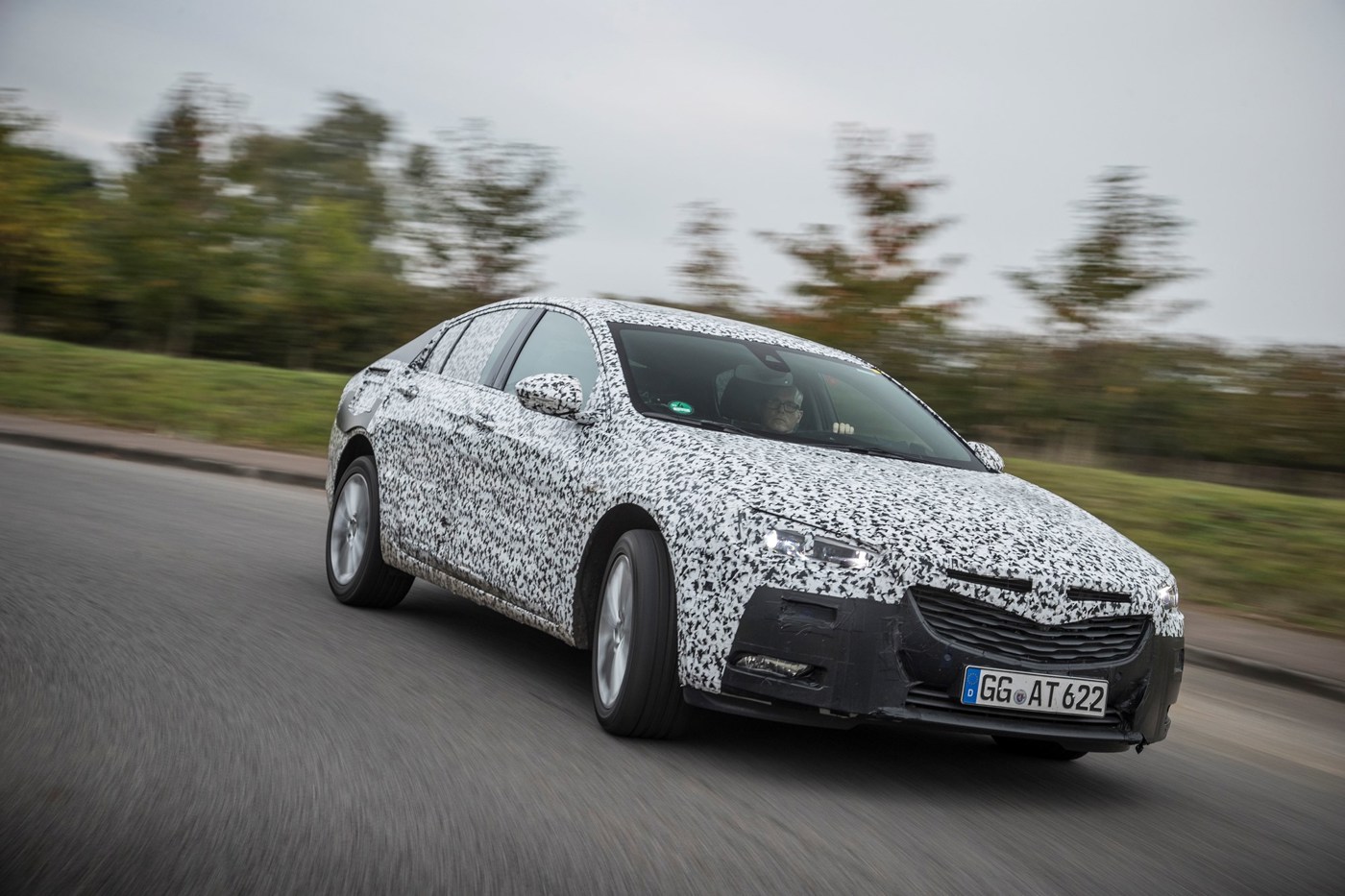Review
Vauxhall seems to be a little confused about the target market for the new Vauxhall Insignia Grand Sport.
At the recent UK launch event near Worcester, the team from Luton were keen to highlight that the new, more premium-feel D/E-segment contender would more effectively attract private sales. However, they also freely estimated that the share of the Insignia’s sales to companies was likely to rise from 82% to 90% over the previous model.
Vauxhall is clearly banking on the success of its 2017 shift towards SUVs with the newly updated Mokka X, and the forthcoming Crossland X and Grandland X, to return strong private sales.
While Vauxhall is optimistic that the Insignia Grand Sport’s standard equipment and low £17,115 starting price (ensuring an accordingly low BIK tax bill) will appeal to business users, it believes there is also a chance it may deliver a deeper appeal in retail with the launch of the Vignale-rivalling ‘Exclusive’ offering later this year.
Exclusive will allow dealers to entice customers with a broad spectrum of personalisation and specification options, including colour-matching.
Dimensionally, the Grand Sport is 55mm longer and 7mm wider than the outgoing Insignia. Its wheelbase is 92mm longer and the front and rear track are 11mm wider.
The result is greater cabin accommodation, but a 10-litre reduction in boot space. Vauxhall suggested this may shift some customers towards the Sport Tourer which, it claims, is no longer a “lifestyle estate” thanks to improvements to its load space. The Grand Sport is 175kg lighter than its predecessor.
Among the key standard specification additions is the introduction of a front camera system, which supports lane-keep assist, following distance indicator, forward collision alert, low-speed collision mitigation braking and active emergency braking.
There’s also keyless entry and engine starting, cruise control and Vauxhall’s OnStar system across the seven-grade range (Design, Design Nav, SRi, SRi Nav, SRi VX-Line Nav, Tech Line Nav and Elite Nav). OnStar delivers connected services including an automatic crash response and 4G Wi-Fi for up to seven devices.
The interior of the Grand Sport will feel familiar to owners of the old Insignia.
Much of the plastic trim feels a little more unyielding to the touch and less prominent trim is quite brittle, but this is a car with an extremely low starting price and the sheer scale of accommodation and neat interior styling may sway potential customers.
The Grand Sport delivers in ergonomic terms. New front seats offer impressive comfort, there’s good adjustability in the driving position and the designers have even factored in a small lip below the seven-inch touchscreen of the Intellilink infotainment system to help steady the hand of an operator on the move.
Vauxhall has also integrated more functionality into the Apple CarPlay-equipped infotainment system, de-cluttering the centre console.
Six engines are available from launch. A 1.5-litre petrol engine (0-62mph in 9.3 seconds) sheds 16kg from the outgoing 1.6, while a 110PS CDTi turbodiesel is the range’s eco-champion, claiming 70.6mpg combined fuel economy and 105g/km CO2 emissions. It accelerates from 0-62mph in 10.9 seconds.
The petrol unit felt strong enough to warrant genuine consideration for those for whom its lesser fuel economy is not an issue.
The 1.6-litre diesel was refined when up and running, but could feel a little stretched during low-rev cruising, a lack of torque limiting flexibility at A-road speeds.
Some of Vauxhall’s more premium party pieces come into play further up the Grand Sport range and were evident in the range-topping Elite Nav 2-litre Turbo 4x4 auto.
Its 260PS petrol engine may struggle to achieve the claimed 32.8mpg, but it comes with LED Matrix headlights (which employ 32 separate elements to ‘cut out’ cars ahead, removing the need to dip the main beam), leather trim with heated front and outer rear seats, a Bose sound system and 20-inch alloys.
Despite the ability to reach 62mph in 6.9 seconds and being the first Vauxhall to feature all-wheel drive with torque vectoring and the adaptive FlexRide damping system, it is not billed as a sporty option.
Vauxhall wants the Nav 2-litre Turbo 4x4 auto to be sold on the basis of its smooth progress and added security.
It drives like the range’s premium offering. While much of the interior architecture remains the same, the drivetrain’s ability to channel power to an outside wheel to increase cornering traction and stability does improve handling and the advanced suspension eliminates some lingering movement after a bump or over repetitive undulations.
This will not be the pivotal model, though, as brand manager Douglas McColm attests above.
Impressive technology aside, where the Grand Sport is sure to take the fight to its key rivals is with its outright value and sleek new styling. Dealers should be prepared for increased interest from fleet operators.
Author:
Tom Sharpe
Former news and features editor (left May 2023)
Factsheet
Factsheet
Price: £17,185-£26,455
Engines: 1.5 turbo petrol 140 and 165 PS, 2-litre turbo petrol 260PS; 1.6 turbodiesel 110 and 136PS; 2-litre turbodiesel 170PS
Performance: 0-62mph 6.9-10.9 seconds; top speed 126-155mph
Transmission: six-speed automatic or manual; eight-speed automatic
Fuel effiiciency: 32.8-70.6mpg
Emissions: 105-197/km CO2


















